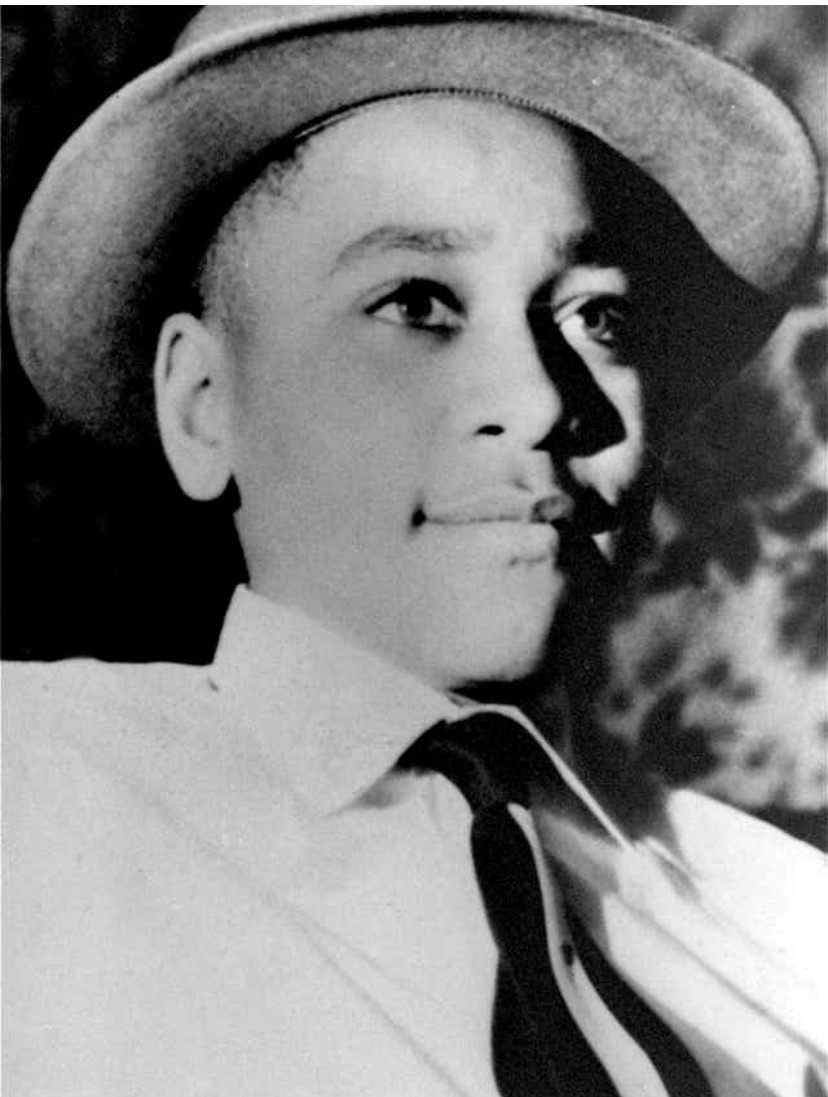Archival Notice
This is an archive page that is no longer being updated. It may contain outdated information and links may no longer function as originally intended.
The Bureau of Justice Assistance (BJA) has several programs named in honor of significant individuals and their roles in our nation’s criminal justice system. One of those figures is Emmett Till. Emmett's murder galvanized the nascent civil rights movement and reshaped America.
One day in the summer of 1955, when he was only 14 years old, Emmett traveled from his home in Chicago to visit family in Money, Mississippi. During his stay, he visited a store owned by Roy and Carolyn Bryant. After visiting the store, he was accused of whistling at Mrs. Bryant, a white woman. Mrs. Bryant told her husband that Emmett made sexual advances toward her.
On a Sunday, four days after Emmett visited the store, Roy and his half-brother, J.W. Milam, kidnapped Emmett at gunpoint from the home of his great-uncle, Mose Wright. He was taken to a barn where he was beaten and finally killed by a gunshot to the head. Emmett’s young body was then tied to a cotton gin fan using barbed wire and thrown into the Tallahatchie River. A few days later, a fisherman found his naked, battered body in the river.
Despite local authorities’ attempts to convince the family to swiftly bury Emmett’s mangled body, his remains were transported back to Chicago at the insistence of Emmett’s mother, Mamie Till.
At home in Chicago, Mamie decided to have an open casket funeral. This act of bravery was captured by Jet magazine. The iconic Black magazine published pictures of Mamie next to her son's mutilated corpse, calling it a lynching rather than a murder. The images were disseminated to other magazines and newspapers, stirring outrage and horror from the broader public.
Calls for justice throughout the country led to the indictment of Roy Bryant and J.W. Milam. Due to Mississippi law, women and African Americans were barred from serving on juries and the defendants were tried before an all-male, all-white jury.
At significant personal risk, Emmett’s uncle took the stand and identified Bryant and Milam as the men who kidnapped his nephew. Despite eyewitness testimony, the jury deliberated for just sixty-six minutes before acquitting both men. Both men later admitted to the murder in a 1956 interview with Look magazine.
Emmett Till's death and the acquittal of his murderers laid bare the savagery of racism and white supremacy in America and served as a catalyst to a generation of civil rights activists such as Rosa Parks and Martin Luther King, Jr.
Given the impact Emmett Till's lynching had on America, in 2022, President Biden signed the Emmett Till Anti-Lynching Act into law after more than 200 attempts to make lynching a federal hate crime. In 2016, the program was authorized as part of the Emmett Till Unsolved Civil Rights Crimes Reauthorization Act. Upon receiving funding in 2020, BJA launched the Emmett Till Cold Case Investigations and Prosecution Program.
The program supports state, local, and tribal law enforcement and prosecutors in investigating and prosecuting cold case murders associated with civil rights violations, and supports the families and communities impacted by these crimes. The inaugural award went to the Office of the Attorney General in Maryland. Then in 2021, BJA made three additional awards to Orleans Parish, Jefferson County, and Houston. These investments are a part of the Office of Justice Programs’ investment of millions of dollars nationwide to investigate and prosecute hate crimes and assist hate crime victims. As a result of the funding, grantees are reviewing hundreds of cases, leading to dozens of suspected lynching cases being reopened. In Maryland, the Attorney General’s office is supporting the Maryland Lynching Truth and Reconciliation Commission. The commission has held small regional convenings with the community about the impact of lynchings. Grantees are also serving as peer supports to each other to share best practices in examination of lynching cases and how to facilitate community healing.



